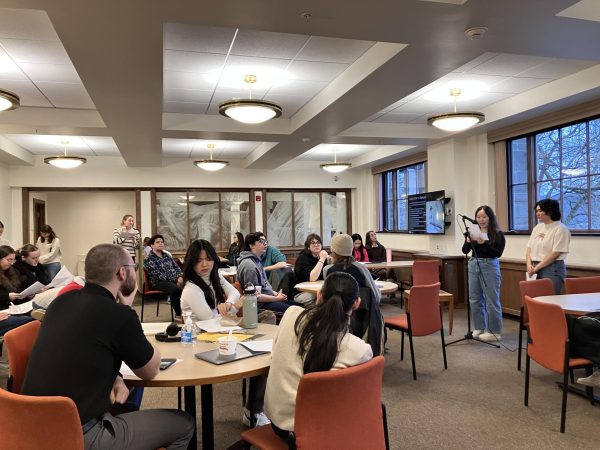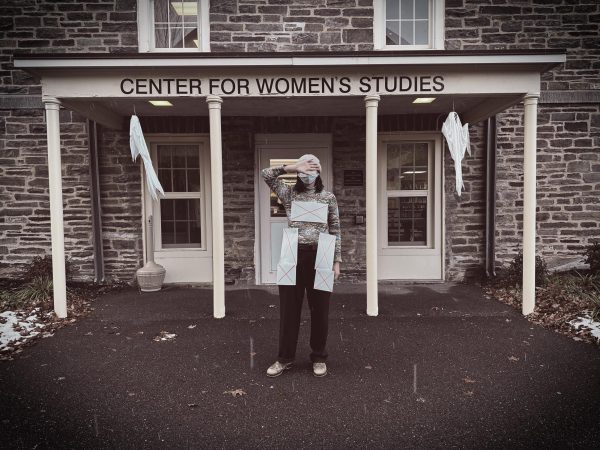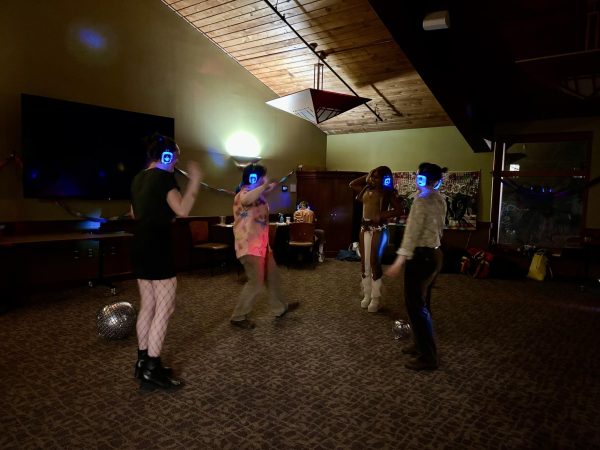Technology as an Enhancer: the Digital Future of Museums
On the third Wednesday of every month this semester, the curators and other various employees from the Picker Art Gallery and Longyear Museum of Anthropology have held conversations to directly engage with the community. These conversations take place during lunch in the Batza Room of Case Library and are catered by Royal India Grill, The goal is to provide students and other members of the community with a unique opportunity to offer feedback on the overall museum experience.
This particular installment of the conversation series on March 27 was entitled “Digital Futures” and focused on the role of technology in museums. The discussion was led by Christy Delair, curator of the Longyear Museum of Anthropology, Kaytlynn Lynch, the Curatorial Assistant for both the Picker Art Gallery and the Longyear Museum of Anthropology and Jesi Buell, an Assistant Professor in the University Libraries and an Instructional Design and Web Librarian.
The discussion began with a short presentation on the topic of technology in museums. Lynch provided some overarching questions for the table to consider, such as whether museums should embrace digital technologies and when digital technologies can hurt rather than help a museum’s presentation.
The preservation of materials and exhibits through digitization allows for more research and more interactivity among museums with the community. Michelle VanAuken, Information Service Technologist for the Picker Art Gallery, stressed the importance of technology in recent exhibits in the Picker Gallery. Many of the exhibits also include contributions from students, which VanAuken connected directly to the preservation of museum materials through digitization.
“The students have an opportunity to contribute hugely to what we know and what we don’t know,” VanAuken said.
Digitization also creates opportunities for engagement with other communities that may not be represented in museum spaces. This idea is extremely important for Delair as curator of the Longyear Museum of Anthropology. She wants to use technology in order to “decolonize exhibits.” She posited the usage of social media in a museum exhibit to directly engage with not only those who visit the exhibit, but also for those who may feel the need to contribute their point of view to an exhibit. With the development of exhibits that interact with technology, these contributions become more possible. However, some considered the potential for harmful aspects of technology.
“What is lost in the communal experience of art?” Joshua Finnell, Head of Research and Instruction asked. “How does a face in a screen help or hinder the communal experience of museums?”
While museum goers may be allowed to more directly engage with an exhibit, they may also affect how they actually engage with an exhibit while physically present. Is the technology merely a “shiny object” that attracts visitors? Or is it actually allowing visitors to lean more about the concept that the technology is attempting to enhance?
Delair also asked, “How can museums use technology as a means to connect rather than disengage?”
Many students and members of the Colgate community contributed their own personal experiences with technology in museums to the conversation. Sophomore Laura Macias discussed her experience at the Museum of Color in New York City and how her takeaway of the experience was simply to take photos and share them on social media. The importance of photo sharing in order to go ‘viral’ was also discussed about the recent Uzumaki Cepeda exhibit in Colgate’s own Picker Art Gallery. Students shared common experiences of having friends visit the gallery to take photos rather than to learn from the exhibit. It became a major concern for many of the museum workers involved in the conversation to ensure that those who visit the museum, even if just for photos, do eventually learn something from their experience.
The major takeaway of the conversation was that technology in museums should be fun, engaging and enhancing. Technology should engage the audience, but it also shouldn’t detract from the overall experience of the museum. Both the Picker Art Gallery and the Longyear Museum of Anthropology plan to utilize technology in the university’s museums as much as possible as a means to engage further with the community and the students.
Contact Emily Karavitch at [email protected].




